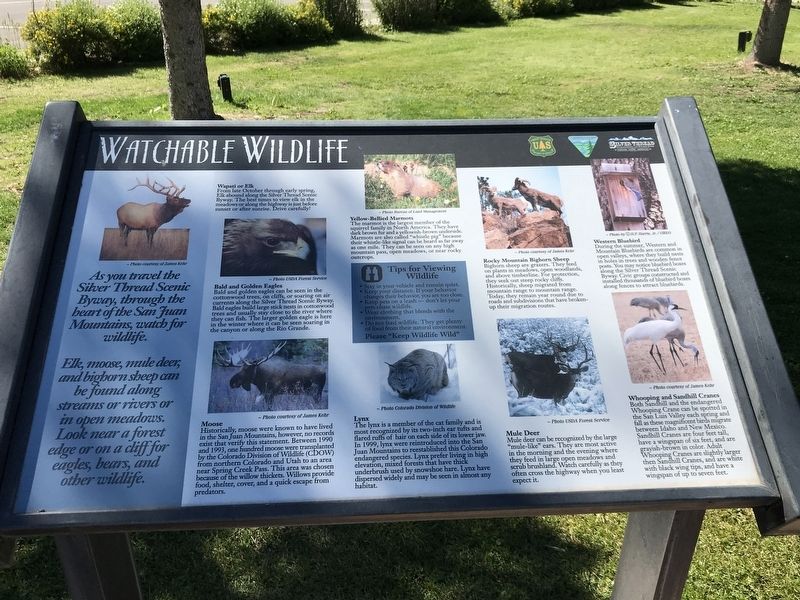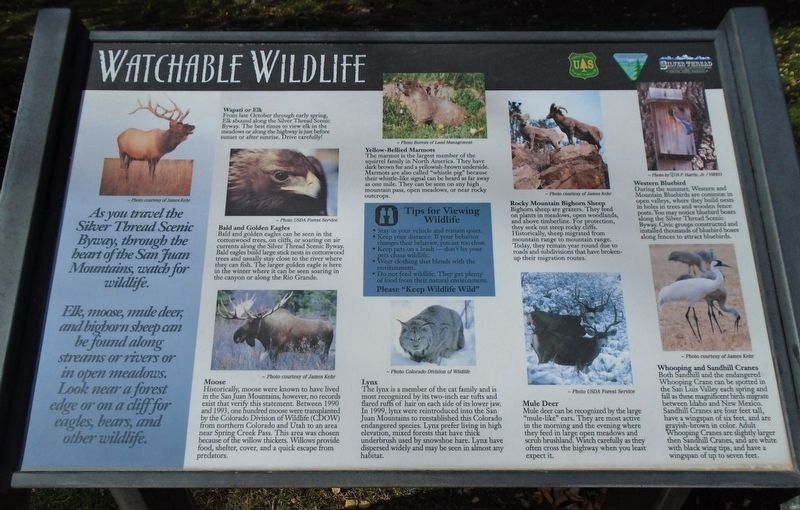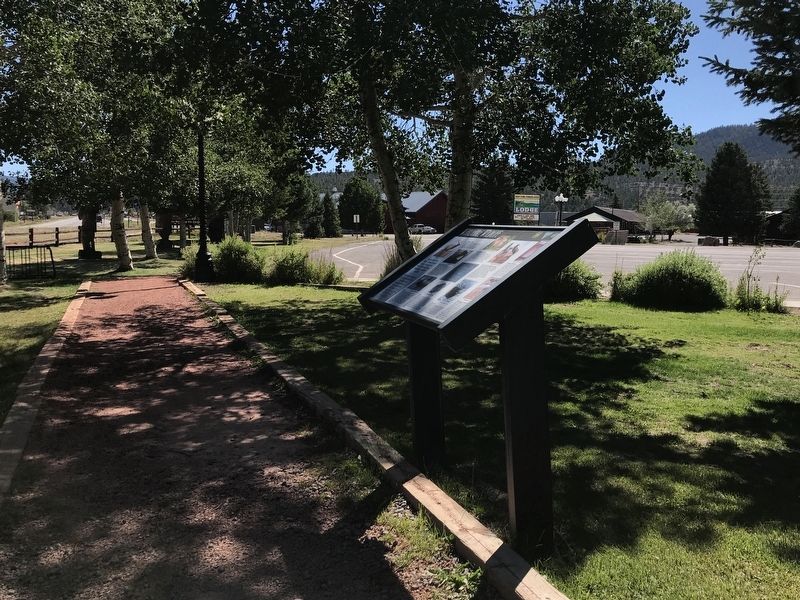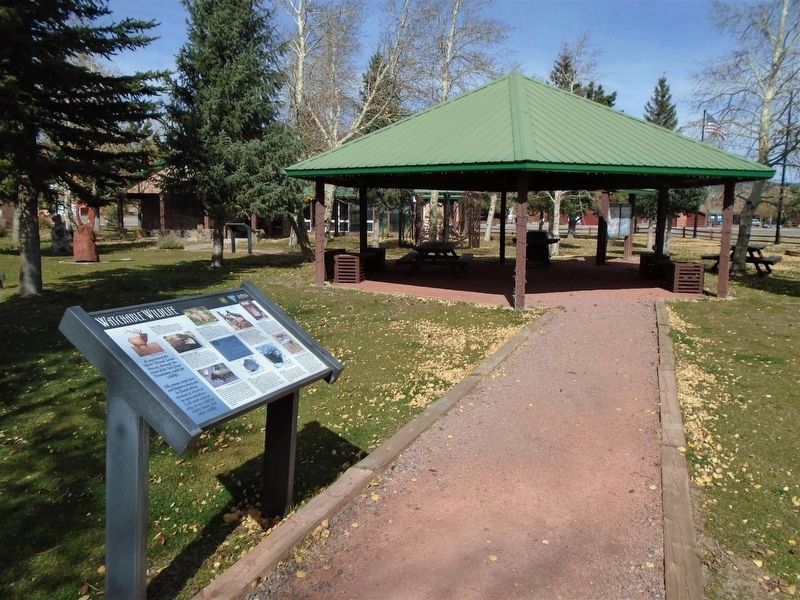South Fork in Rio Grande County, Colorado — The American Mountains (Southwest)
Watchable Wildlife
Wapati or Elk
From late October through early spring, Elk abound along the Silver Thread Scenic Byway. The best times to view elk in the meadows or along the highway is just before sunset or after sunrise. Drive carefully!
Bald and Golden Eagles
Bald and golden eagles can be seen in the cottonwood trees, on cliffs, or soaring on air currents along the Silver Thread Scenic Byway. Bald eagles build large stick nests in cottonwood trees and usually stay close to the river where they can fish. The larger golden eagle is here in the winter where it can be seen soaring in the canyon or along the Rio Grande.
Moose
Historically, moose were known to have lived in the San Juan Mountains, however, no records exist that verify this statement. Between 1990 and 1993, one hundred moose were transplanted by the Colorado Division of Wildlife (CDOW) from northern Colorado and Utah to an area near Spring Creek Pass. This area was chosen because of the willow thickets. Willows provide food, shelter, cover, and a quick escape from predators.
Yellow-Bellied Marmots
The marmot is the largest member of the squirrel family in North America. They have dark brown fur and a yellowish-brown underside. Marmots are also called "whistle pig” because their whistle-like signal can be heard as far away as one mile. They can be seen on any high mountain pass, open meadows, or near rocky outcrops.
Tips for Viewing Wildlife
• Stay in your vehicle and remain quiet.
• Keep your distance. If your behavior changes their behavior, you are too close.
• Keep pets on a leash — don't let your pets chase wildlife.
• Wear clothing that blends with the environment.
• Do not feed wildlife. They get plenty of food from their natural environment.
Please "Keep Wildlife Wild"
Lynx
The lynx is a member of the cat family and is most recognized by its two-inch ear tufts and flared ruffs of hair on each side of its lower jaw. In 1999, lynx were reintroduced into the San Juan Mountains to reestablished this Colorado endangered species. Lynx prefer living in high elevation, mixed forests that have thick underbrush used by snowshoe hare. Lynx have dispersed widely and may be seen in almost any habitat.
Rocky Mountain Bighorn Sheep
Bighorn sheep are grazers. They feed on plants in meadows, open
woodlands, and above timberline. For protection, they seek out steep rocky cliffs. Historically, sheep migrated from mountain range to mountain range. Today, they remain year round due to
roads and subdivisions that have broken up their migration routes.
Mule Deer
Mule deer can be recognized by the large "mule-like” ears. They are most active in the morning and the evening where they feed in large open meadows and scrub brushland. Watch carefully as they often cross the highway when you least expect it.
Western Bluebird
During the summer, Western and Mountain Bluebirds are common in open valleys, where they build nests in holes in trees and wooden fence posts. You may notice bluebird boxes along the Silver Thread Scenic Byway. Civic groups constructed and installed thousands of bluebird boxes along fences to attract bluebirds.
Whooping and Sandhill Cranes
Both Sandhill and the endangered Whooping Crane can be spotted in the San Luis Valley each spring and fall as these magnificent birds migrate between Idaho and New Mexico. Sandhill Cranes are four feet tall, have a wingspan of six feet, and are grayish-brown in color. Adult Whooping Cranes are slightly larger then Sandhill Cranes, and are white with black wing tips, and have a wingspan of up to seven feet.
Erected by US Forest Service, Bureau of Land Management, and Silver Thread Scenic and Historic Byway.
Topics. This historical marker is listed in this topic list: Animals. A significant historical year for this entry is 1990.
Location. 37° 40.145′ N, 106° 38.5′ W. Marker is in South Fork, Colorado, in Rio Grande County. Marker is on Silver Thread Lane. Marker is on the grounds of the South Fork Visitor Center. Touch for map. Marker is at or near this postal address: 28 Silver Thread Lane, South Fork CO 81154, United States of America. Touch for directions.
Other nearby markers. At least 6 other markers are within 16 miles of this marker, measured as the crow flies. A Passport Through Time (a few steps from this marker); Living on the Byway (a few steps from this marker); Rio Grande — A River of Life (a few steps from this marker); Continental Divide Trail (approx. 15.6 miles away); The Great Divide (approx. 15.6 miles away); History of a Road (approx. 15.6 miles away).
Credits. This page was last revised on November 21, 2020. It was originally submitted on July 21, 2020, by Duane and Tracy Marsteller of Murfreesboro, Tennessee. This page has been viewed 164 times since then and 15 times this year. Photos: 1. submitted on July 21, 2020, by Duane and Tracy Marsteller of Murfreesboro, Tennessee. 2. submitted on November 21, 2020, by William Fischer, Jr. of Scranton, Pennsylvania. 3. submitted on July 21, 2020, by Duane and Tracy Marsteller of Murfreesboro, Tennessee. 4. submitted on November 21, 2020, by William Fischer, Jr. of Scranton, Pennsylvania. • Andrew Ruppenstein was the editor who published this page.



